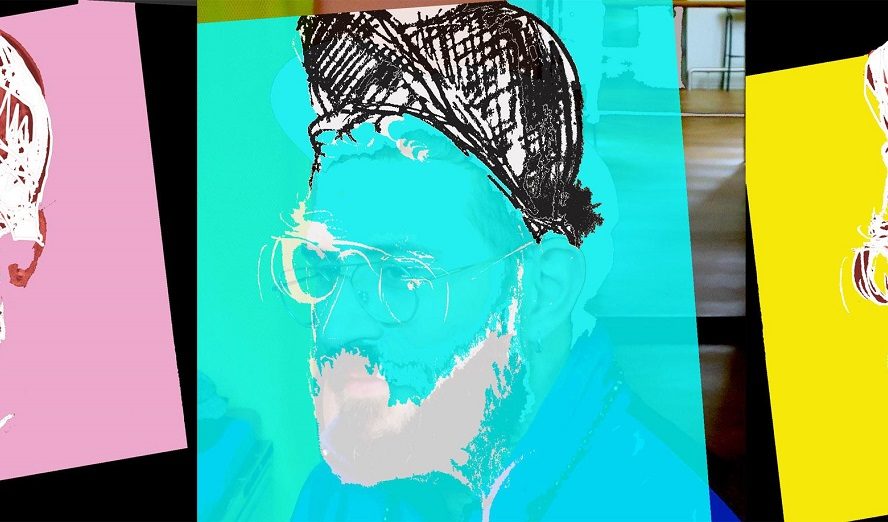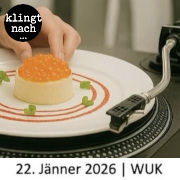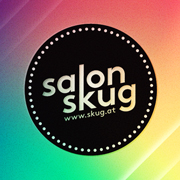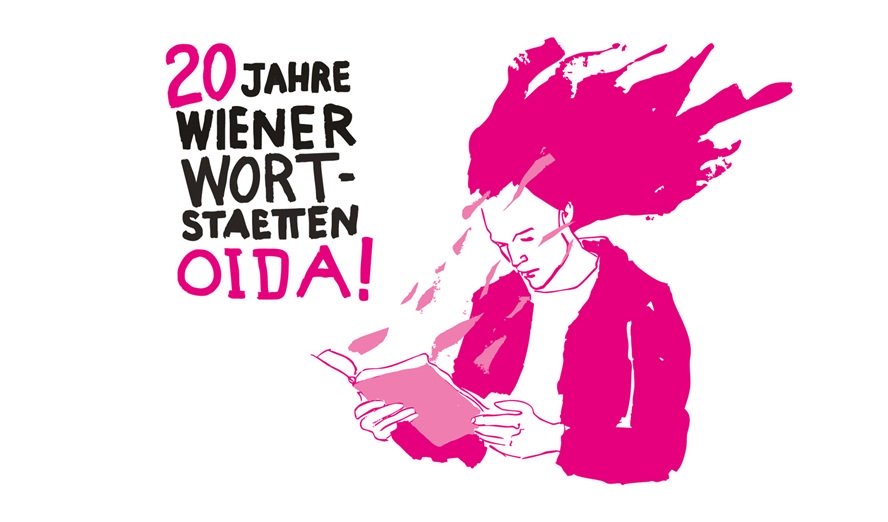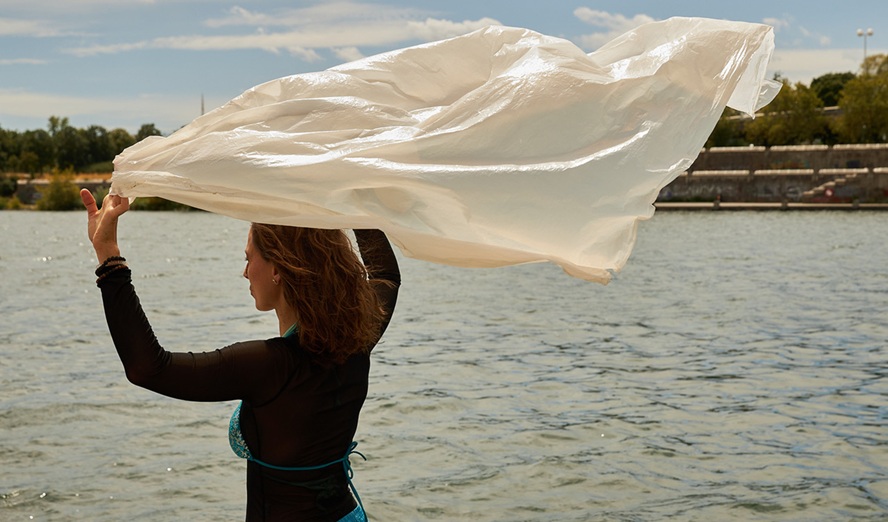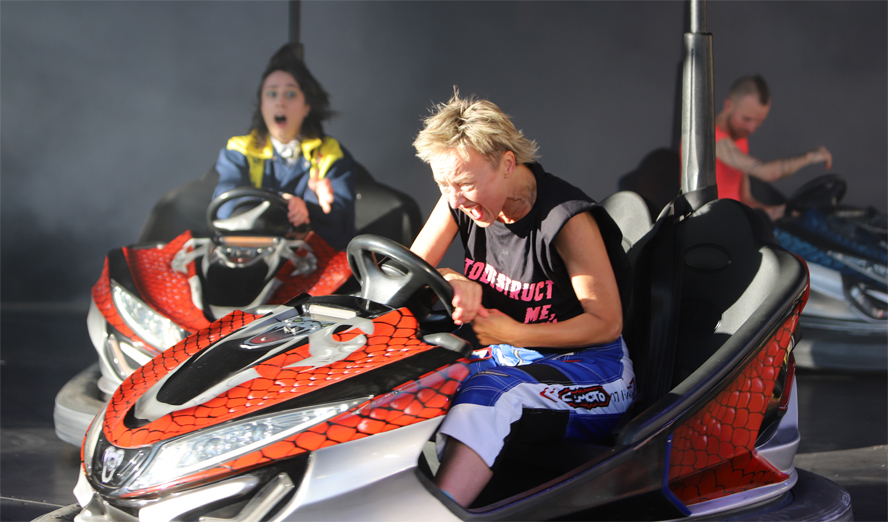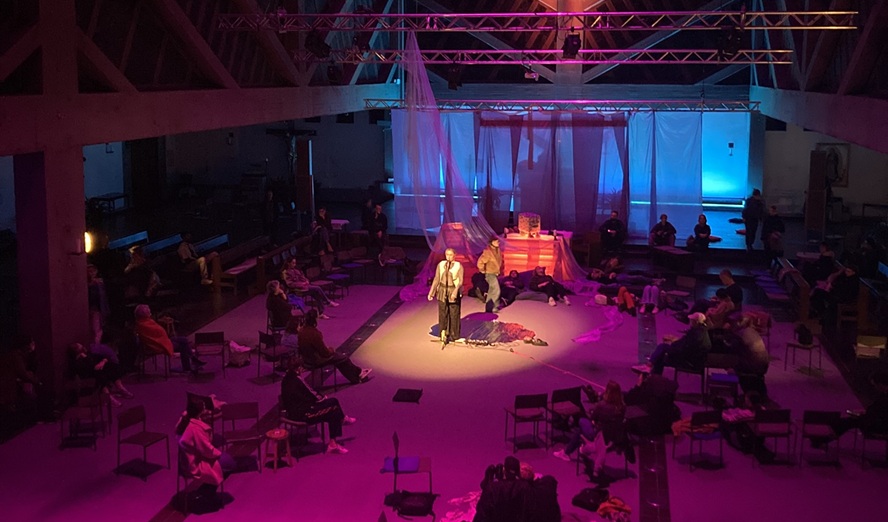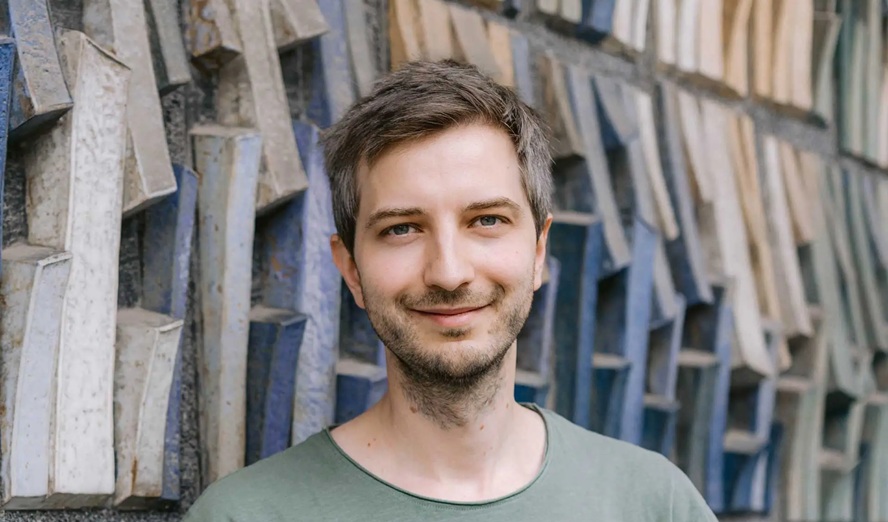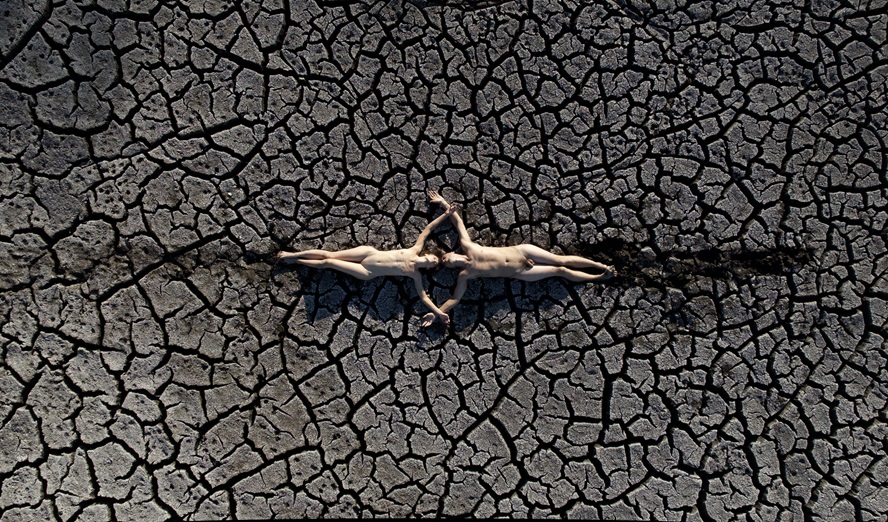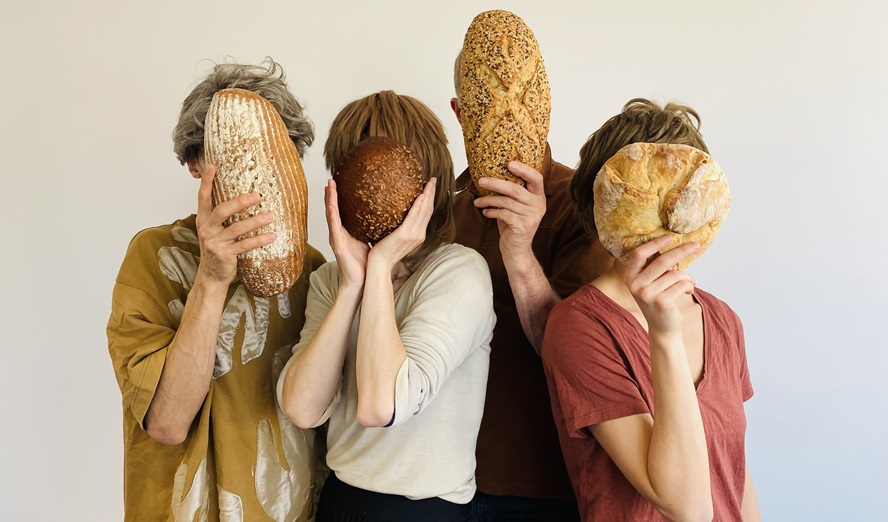Gérald Kurdian studied visual arts at the École Nationale d’Arts de Paris-Cergy before he went on to complete his training in contemporary dance under Mathilde Monnier and Xavier Le Roy at Ex.e.r.ce 07 – CCNMLR. His concerts make use of electronic live music, performance art and documentary performance. In 2018 he participated in Philip Gehmacher’s »It is a balancing act to live without your attention« at Tanzquartier Wien, alongside fellow performer Jen Rosenblit. Gérald Kurdian’s sensual collages feature texts on feminist and queer activism as well as interviews with people whose concepts of sexuality and/or gender go beyond common stereotypes. Donna Haraway’s changing mythological characters have as much part in this as the concept of eco-sexuality – sex with nature. This means probing the subconscious and calling for a celebration of utopian concepts of sexuality and the body.
His solo show »Hot Bodies – Stand Up« is part of a series of works entitled »Hot Bodies of the Future« – a transdisciplinary performative research project initiated in 2017, that includes working together with a participative feminist choir, performance installations and Queer Ball celebrations. The solo show »Hot Bodies – Stand Up« included telling stories reminding of stand-up comedy, self-produced techno tracks to which Kurdian sang, using a vocoder tool that pitched his voice and transformed it into a quite female sounding one. Additionally, he repeatedly changed his clothes and thereby shifted between male and female fashion roles. It was apparent that Kurdian was in constant search for some kind of identity that was just not manifested yet. The show took place at Tanzquartier Vienna on 9th March 2019. Beforehand, skug met the artist for an interview at the TQW studios during the rehearsal for his solo show.
skug: Can you explain the term »Hot Bodies«, that you use in the title for your concert tonight here at the TQW studios? I read it is part of a series of works entitled »Hot Bodies of the Future«, a performative and musical research into queer micro-politics and alternative forms of sexuality.
Gérald Kurdian: »Hot bodies of the future« was the title of the PhD thesis I started. The first question was, how sexual minorities at large, including feminist concepts, utilized music and musical contexts for their specific endeavors and fights. Why did we always see music attached to sexual revolution in history? Starting with Hildegard von Bingen, born in the 11th century…
The suffragettes for example had fighting songs, too…
Protest songs, yes, totally – the feminists had female-positive songs. Later, several feminist movements up to disco in the 1970s and house music in the 1990s came along. Now a lot of trans people, as I understand it, use music as a sensorial manifesto. So I wanted to see from the perspective of experimental electronic music, how I could create performative and musical works to engage the queer bodies that I saw in front of me, and how I could manifest what I saw in front of me ongoing in the queer, sex-positive and other movements. The expression »Hot Bodies» is a distinction to the binary – or, as the queer people tend to say: the hetero-normative body concept. The expression is meant as an opposite to the cold, strategic, inert, organized, rationalized and mechanized concept of the body. »Hot Bodies« are fluid in movement, dealing with the wildness of desire, of sexuality, of orgasm. So I was interested in this heritage of feminism that describes the trajectory of the very Fordist usage of the term body in the 20th century and its post-industrial understanding. I worked a lot together with dancers, so I am very sensitive to the way people use their bodies.

When did you start engaging with dance and choreography?
I started studying visual arts and dance in combination in 2003, and then I entered the »Ex.e.r.ce 07« programme at Centre Chorégraphique National de Montpellier lead by Mathilde Monnier and Xavier Le Roy. Xavier Le Roy is a very conceptual choreographer and he very generously invited me to an experiment, a six-month residency called »six mois, un lieu«, with a community sharing practices, which provided important inputs of a collective concerned with the experimental approach to what the body can do. Then I met choreographers like Eleanor Bauer, Carole Perdereau, Jefta van Dinter and Philipp Gehmacher. We started working together, in some cases I created music for them.
How would you describe yourself, your own identity?
I am a polysexual someone, and I sexualize a lot of things. Objects are very important in my approach to sexuality. I think fetishism is very interesting when it comes to healing. There is something about the distance that emerges in fetishism, giving strength to an object and allowing some communication with it. The healing aspect consists in that I cannot deal with every internal issue in my body from within, so I need to externalize some, for instance, through photography. The art of photography for me is very much about fetishization, totemization and even exhaustion. There is something interesting about exhausting the body in order to give the objects some space to breathe. I want people to manage to look at sexual organs and sexual activities in a way of peripheral eroticism, that allows a very genuine and direct perception of the body. If you don’t give people the time to adjust to the presented images and pictures, the whole experience becomes hetero-normatively pornographic, using the strategy of a shock: it’s too fast and too crude. I utilize photography for examining my sexual life and I want people to experience it as something they can see, receive and listen to. They can participate without having to be afraid of getting shocked. It is about consent, of course, but also about how we can crystallize different concepts of queer culture, which is problematic for me, because I am not interested in the formalist aspect and approach of queerness. I am not interested in people saying that someone is gay and therefore must be queer. I am not sure whether these things go together at all. In my opinion, queer means an opposition. I refuse a lot of things and because I refuse a lot of things, I am on a deconstructivist trajectory that makes me someone within the queer zone and practices.
What do you deconstruct?
If I can speak about the show rather than myself, I think I was always on the margins of being a pop musician. I did tours, I released records and stuff like that (editor’s note: »This is the hello monster« LP, 2009; »Icosaèdre« EP, 2016). But I am not a professional dancer, I am not really a performer or a director. It is something liminary, I am amidst, in the middle of all these professions, which I quite like. It demands from the audience to agree to play a game that will only work if we participate in it together. If they come to my show, something will happen… In terms of deconstruction, the first aspect of deconstruction would be the spectacle as a satisfactory act that we share, a place where the rules are OK for everyone. The second aspect concerns the physical presence and the confusion provided by the question whether the body on my photographs is my own body or that of somebody else. There is something about my body that is kind of multiple or polyphonic – I have different voices and different presences. That is interesting for me as a male, because the problem of a male body for me is that it is too consistent, too compact. The monolithic aspect of the male body, for me, has to be investigated. Men have to experience how they can lose things, and how hollow they can become.
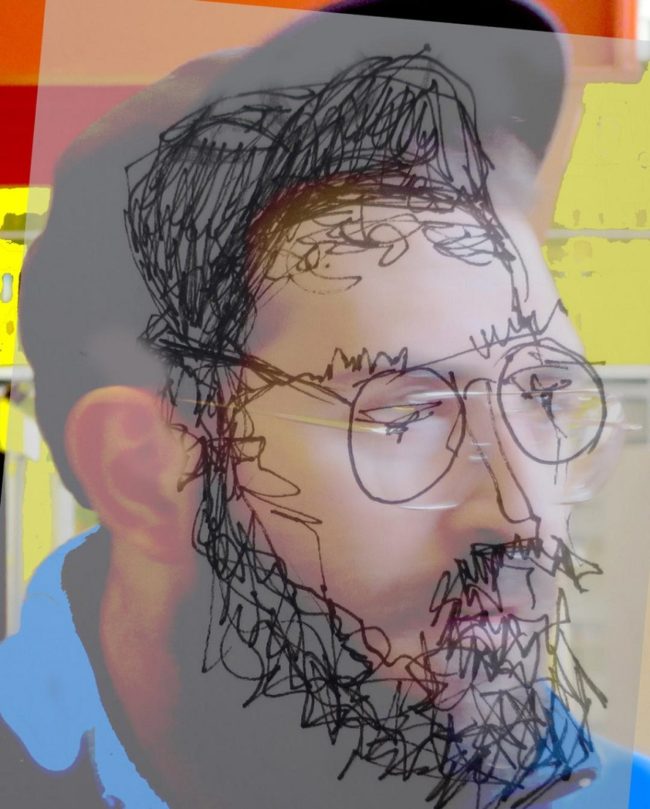
Which identity in terms of look do you prefer?
Hm, this changes a lot, and depends on the day. I like to play with looks and I like things with a little twist. I do not represent the »gay bear« heritage. Maybe the closest I would identify with is the »Radical Fairies« movement, which, for me, belongs to the most political of queer movements today. When I was young, I participated in a french punk and artist movement called »Transpédégouine« in the late 1990s.
I pick a random lifestyle magazine here; how would you interpret this quote from Lady Gaga: »You have to be unique and different, shine in your own way.«
The »you have to« is quite problematic. It is very complicated. What I dislike about it is that it puts everything to an individual scale, which I feel is very sad. I am more concerned with collective ways for people to become what they need to be. I would rephrase the question: How do we shape our collectivity, so that every individual manages to express its uniqueness? I also worked with choirs, like at ImPulsTanz in 2018. During that phase, I was concentrated on the question of manifestos. I was thinking about: How we can express, by singing, other people’s desires for revolution, for instance? In workshops I hosted, I proposed to read some theory together, mostly manifestos, like Donna Haraway’s »Cyborg Manifesto« or Valerie Jean Solanas’ »SCUM Manifesto«. We had conversations based on this reading and the participants then should write consecutive manifestos concerning their own wishes and desires, which were gathered, brought into the form of a musical piece by the whole collective. Since then, we have a permanent choir in Paris which has very much elaborated the healing aspects of the mentioned process, rituals sometimes on the edge of witchcraft. An upcoming project will be called »Hot Bodies Ensemble«, where members of this choir will be performing together with me.
Is there a specific reason why you like manifestos?
I like the fact that they are a bit outdated. There is something tacky about them, concerning the cynical times we are living in at the moment. Manifestos proof that in history and herstory some people were allowed to let their anger take shape in a very frontal way. There is something very basic and head-on about this, because everything is all so clear. The wish for a political balance, a livable future or other things. Since we are now in a time where language is very diverse and also very capitalistic, a manifesto can be seen as a very dusty Marxist or Trotzkist approach. But I think it is still useful. It is still necessary that people put on paper what they want or don’t want! Donna Haraway said that her manifesto should be taken ironically and seriously at the same time. Doing performance is funny. There is something absurd about this situation in which 250 people are watching me. But if we accept the absurdity of this thing and simultaneously take it very seriously, then the situation can shift and can become a collective thing. But this demands trust. If we don’t trust it, it gets very capitalistic for me. It’s like Facebook for a lot of people: you trust, that you are going be loved and recognized as a unique individual and shining your own way. But that’s not going to happen, unless for a few youngsters who manage to have a YouTube channel. It feels like this contract is already fading. I trust other things: Let’s trust the scale that we have, let’s trust our real collectivity.
So you perform in real theaters and dance venues despite or against the possibility that you could just use social media?
That’s a bit too heroic for me, it is not my agenda. But I am very angry, I have a lot of anger.
And you try to transform it through your art?
…and through my sexuality.

What is your connection between anger and sex?
That’s quite intimate. I appreciate the sex-positive scene and the porn scene because they try to examine the borders of culture. When you go through sexual experiments within workshops, you have to lose things on the way, it won’t always be comfortable. I experienced pure moments where my intimacy, my desire, and my body were challenged. So I am interested in post-porn movies and post-porn photography. They play with the question: How much can I show so that you stay with me? I don’t want to slap the audience with bright-colored mainstream pornography.
How do you involve these topics in your artwork?
I am not sure if I do this at full length in my artwork now. I mean I am going there. What I am doing now is being interested in autobiography and autofiction. And I am confident in the fact that, as an individual, I go through experiments that can resonate within a spectacular frame. I was always very keen in knowing well the music scene and the performing art scene. In the music scene there is this myth that musicians sing about their real life, mothers or heartbreaks. But I don’t know if the most moving songs I wrote where really true, in this sense. When I came to performing arts it was quite the opposite. It was all about the honesty of language and body practice. But authenticity, at the same time, was considered a romantic catastrophe. So I decided to use the musical strategy to let the people think: Maybe it is true, maybe all these pictures he shows are facts from his life. Maybe he really had sex in the woods. So I create a maybe-true intimacy which is the same strategy I use in sex-positive contexts. It is a maybe-true intimacy that I need to practice with someone because I really don’t know the other’s body. But this supposed intimacy then becomes an actual intimacy in the process.
What kind of sex-positive events happen in your surroundings?
In France I would say the fairies are quite active. It became something quite big in the last years. In Berlin there is a community center in Schöneberg called The Village really close to the old historical gay areas. They have a three-day festival called Stretch. It is mostly about alternative male identities. In France there is the What The Fuck Fest. In France I am concentrating more closely on the sex workers scene and people who work in the porn industry. These are the people I like to learn from. I take pictures of some of them, I hang out with them, some are lovers. It is a very active scene and a scene I extremely joyfully and emotionally live close to.
This is a nice segue to the practices of the eco-sex movement. What do you find interesting about this form of maybe-true intimacy? What is it like to have sex with snow?
I never made love to snow. What I like about eco-sexuality, poly-sexuality and pan-sexuality is that they encourage an interdependency. An interdependent relationship between the body and the other bodies at large. It’s not my aim to objectify the other bodies because some of them are human beings, but I like the fact that eroticism is a connection between things that surround you and people close to you. And as a personal habit, my intimacy boundaries are not the ones I learned in moralistic situations. So I have no problem touching people, I don’t have problems that other people try and practice with my body. Of course, it is pleasant and magical to be in nature or in the woods or in the water or having intercourse with people in natural environments. I remember the words of Annie Sprinkle: »Remember how eroticism binds you to people and apply the same binding to the environment!« Eco-sex as a matter may seem a little silly, and I like it because it is funny. And if this performance piece »Hot Bodies – Stand Up« had to be a manifesto, it would be about how I can get people to understand that eroticism is something that you cannot identify with in certain ways. You can say: »I desire this or that«, but this is capitalistic, then. And it is not eroticism to me. A body has a kind of logic apprehension and its own form of evolution that you start to understand, and then it is possible for it to channel things. How do queer bodies go through states that are connected to special kinds of music? I realized that orgasmic climax pop structures are good within a very male driven dramaturgy. If you, for example, listen to female DJs like Nina Kravitz, there are not many breaks and pauses. When I recognized this, my research changed and I decided to create a kind of music, that could really address the queer bodies I hang out with. Now I make electronic music that is quite club driven. But I also play with expectations and structures, it is quite playful.
What about instrumental music or punk music?
I adore it. I will play the bass and the keys in my show. I prefer the experimental scene represented by Holly Herndon and other people who are combining acoustic sounds, voices and instruments with electronic synths. And I like Planningtorock, for example, or Coucou Chloe, Monolithe Noir. The French music industry’s attitude is very different compared to other scenes. In France, most of the time risks are avoided and therefore the developments within the scene often seems a bit slow compared to Canada or Berlin.
What do you think about the cultural tradition of house music?
House is a bit too gay for me. For me, it has to be more harsh and clubby, hence, I do like techno more. It is a materialistic, machine-driven kind of music depending on a mechanical logic. In my opinion, it is a very sexual kind of music. House is more erotic, it manifests a different approach, a different intention. Personally, house music demands too much for my taste. It is always seductive like: »Listen to me more, come closer!« And I am not interested in that. I like music that I can decipher and analyze.
»Clito Manifesto« (»Hot Bodies – Stand Up« lyrics hand-out)
Written and performed by Gérald Kurdian & Tarek X
Seven words and I´m in the city
Cuz I´m just 8000 nerves of erectilities
I´m on a war, I want to give you more
I´m gonna get ya get ya get ya get ya go go
You say sweet spot but that´s a real shame, you say vagina´s just a hole
I go down the hills of labia minora, you know I´m wanting more
You say love is such a crappy thing
Go say love is such a crappy thing
I got bulbs and glans and everything is crazy
Kind of a boner times a mulitbillion
Your tongue is sore, I want it back back back back back back
You came and everything is over
Now all the things you say are just a bummer
„I´m a falling, rolling, calling wound“ oh
I said
I´m the shady cuz I´m the real shady though both my crura fans are wet and vermilion
Your tongue is sore, I want it back back back back back back
I said
You came and everything is over
Now all the things you say are such a downer
I am a falling, calling
You pray for size and dexterity
But all the things you do are so obscure to me
Go falling, rolling, call it your wound
I said
I´m the shady cuz I´m the real shady now I´m the real man, I´m the real man
I´m the shady now I´m the reals shady now
I´m in I´m out
I´m on the radio
Links:
http://www.geraldkurdian.com/
https://www.wearehotbodiesofthefuture.org/
